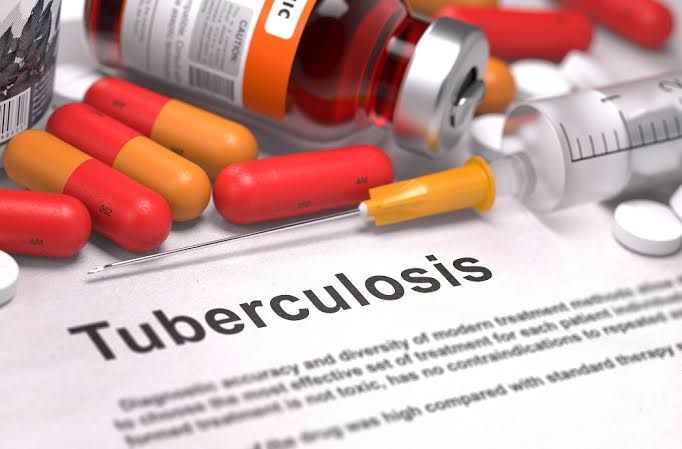
Concepts of TB Treatment with Special Emphasis on Two Phases of Therapy
Tuberculosis (TB) treatment is a structured and phased approach aimed at eradicating Mycobacterium tuberculosis from the body while minimizing the risk of drug resistance. The treatment is divided into two distinct phases: the intensive phase and the continuation phase, each serving specific purposes in achieving clinical and microbiological cure.
1. Intensive Phase
The intensive phase typically lasts for 2 months and involves the administration of a combination of four first-line drugs: isoniazid (INH), rifampin (RIF), pyrazinamide (PZA), and ethambutol (EMB). The primary goal during this phase is to rapidly reduce the bacterial load by targeting actively replicating mycobacteria. This reduction in bacterial burden helps alleviate symptoms, promotes histological restoration of lung tissue, and decreases infectiousness, thereby reducing transmission risk.
- Mechanism: During this phase, bactericidal drugs like INH and RIF play a critical role in killing fast-growing bacteria. PZA targets semi-dormant bacilli residing in acidic environments such as granulomas.
- Significance: This phase is crucial for preventing the emergence of drug-resistant strains by ensuring that multiple drugs act synergistically to kill bacteria effectively.
2. Continuation Phase
The continuation phase follows the intensive phase and typically lasts 4 months but may extend to 7 months under certain conditions (e.g., cavitary disease or positive sputum culture after 2 months). In this phase, only two drugs—INH and RIF—are used. The focus shifts to eliminating any remaining dormant or slow-replicating bacteria to prevent relapse.
- Mechanism: Rifampin continues its sterilizing effect on dormant bacilli, while INH ensures residual active bacteria are eradicated.
- Significance: This phase consolidates treatment gains made during the intensive phase and ensures long-term cure.
Both phases are essential for achieving complete eradication of TB while minimizing relapse rates and preventing drug resistance.
Understanding Combination Therapy in TB Management
Combination therapy refers to using multiple drugs simultaneously to treat tuberculosis. This approach is fundamental in TB management due to several key advantages:
Advantages
- Prevention of Drug Resistance: Using multiple drugs reduces the likelihood that Mycobacterium tuberculosis will develop resistance since mutations conferring resistance to all drugs simultaneously are rare.
- Enhanced Efficacy: Different drugs target various aspects of bacterial metabolism or replication, leading to a synergistic effect that enhances overall efficacy.
- Reduction in Relapse Rates: Combination therapy ensures that both actively replicating and dormant bacteria are targeted, reducing the chances of relapse after treatment completion.
- Shortened Treatment Duration: By combining potent bactericidal and sterilizing agents like rifampin and pyrazinamide, treatment duration can be reduced compared to monotherapy.
Disadvantages
- Increased Risk of Adverse Effects: Combining multiple drugs increases the likelihood of side effects such as hepatotoxicity (e.g., from INH or PZA) or optic neuritis (from EMB).
- Complex Regimens Affect Adherence: Patients may find it challenging to adhere to multi-drug regimens over extended periods without proper supervision.
- Drug Interactions: Combination therapy can lead to pharmacokinetic interactions between TB drugs or with medications used for comorbidities like HIV/AIDS.
Despite these challenges, combination therapy remains indispensable for effective TB management.
Mechanisms of Action, Pharmacokinetics, Uses, and Side Effects
1. Isoniazid (INH)
- Mechanism of Action: Isoniazid inhibits mycolic acid synthesis—a critical component of the mycobacterial cell wall—by targeting enoyl-acyl carrier protein reductase (InhA). It is highly effective against actively dividing bacteria.
- Pharmacokinetics: INH is well absorbed orally and widely distributed across tissues including cerebrospinal fluid (CSF). It undergoes hepatic metabolism via acetylation; genetic polymorphisms influence whether individuals are “slow” or “fast” acetylators.
- Uses: First-line agent for both active TB disease and latent TB infection.
- Side Effects:
- Hepatotoxicity: Risk increases with age or concurrent alcohol use.
- Peripheral neuropathy: Due to pyridoxine depletion; prevented by co-administration of vitamin B6.
- Rarely causes lupus-like syndrome.
2. Rifampin (RIF)
- Mechanism of Action: Rifampin inhibits bacterial DNA-dependent RNA polymerase by binding its β-subunit, thereby blocking transcription initiation.
- Pharmacokinetics: Well absorbed orally; metabolized hepatically via cytochrome P450 enzymes; induces its own metabolism along with other drugs metabolized by CYP450 pathways.
- Uses: Essential component in both active TB regimens and latent infection treatment; also used for other infections like leprosy.
- Side Effects:
- Hepatotoxicity: Can exacerbate liver injury when combined with other hepatotoxic agents.
- Orange discoloration: Urine, sweat, tears may turn orange-red.
- Drug interactions: Potent inducer of CYP450 enzymes leading to reduced efficacy of oral contraceptives or antiretroviral therapy.
3. Ethambutol (EMB)
- Mechanism of Action: Ethambutol inhibits arabinosyl transferase enzymes involved in synthesizing arabinogalactan—a key component of mycobacterial cell walls—thereby impairing cell wall integrity.
- Pharmacokinetics: Absorbed orally; excreted unchanged in urine; requires dose adjustment in renal impairment.
- Uses: Primarily included during intensive-phase therapy until drug susceptibility results confirm no resistance.
- Side Effects:
- Optic neuritis: Causes reversible visual disturbances including red-green color blindness; requires regular monitoring.
- Gastrointestinal upset at higher doses.
4. Pyrazinamide (PZA)
- Mechanism of Action: Pyrazinamide disrupts membrane potential and energy production by converting into its active form pyrazinoic acid under acidic conditions found within granulomas.
- Pharmacokinetics: Well absorbed orally; metabolized hepatically; excreted renally as metabolites.
- Uses: Effective against semi-dormant bacilli residing within acidic environments; shortens overall treatment duration when combined with other first-line agents.
- Side Effects:
- Hepatotoxicity: Dose-dependent risk requiring liver function monitoring.
- Hyperuricemia: May precipitate gout attacks but rarely necessitates discontinuation unless symptomatic.
Conclusion
The management of tuberculosis relies on a structured approach involving an intensive bactericidal phase followed by a continuation sterilizing phase. Combination therapy plays a pivotal role in preventing resistance while enhancing efficacy but comes with challenges such as side effects and adherence issues. Understanding the mechanisms, pharmacokinetics, uses, and adverse effects associated with first-line agents like isoniazid, rifampin, ethambutol, and pyrazinamide provides clinicians with essential tools for optimizing patient outcomes.







